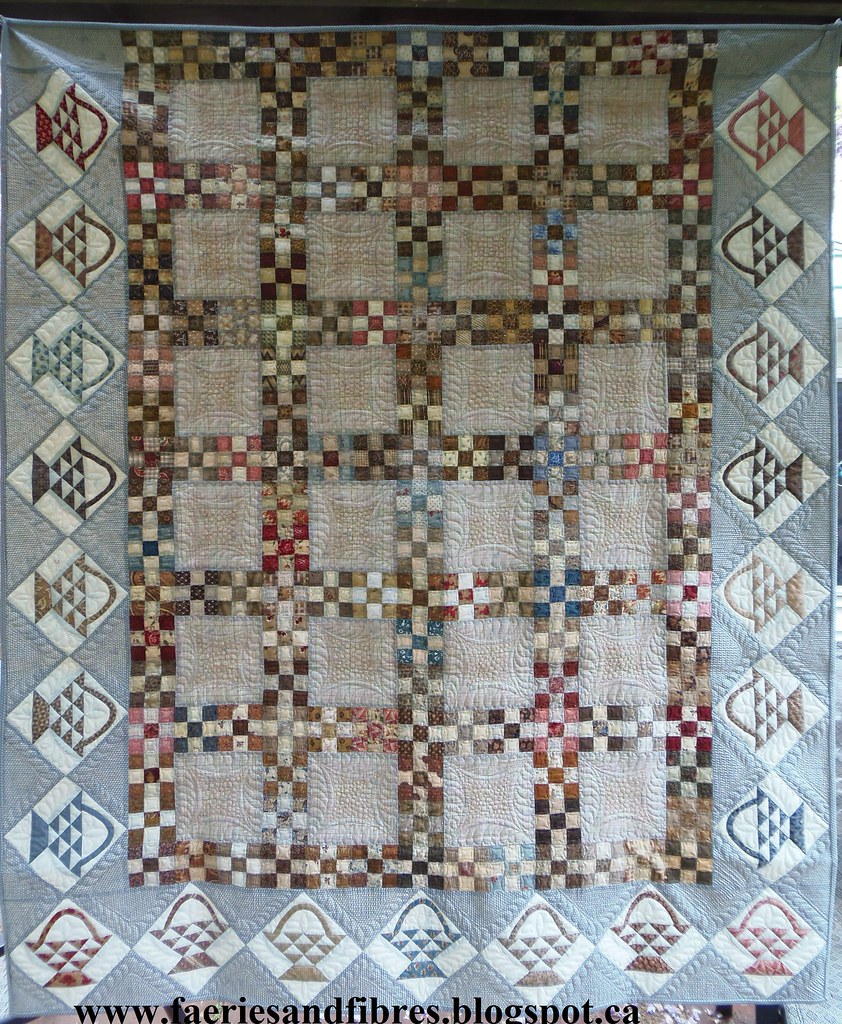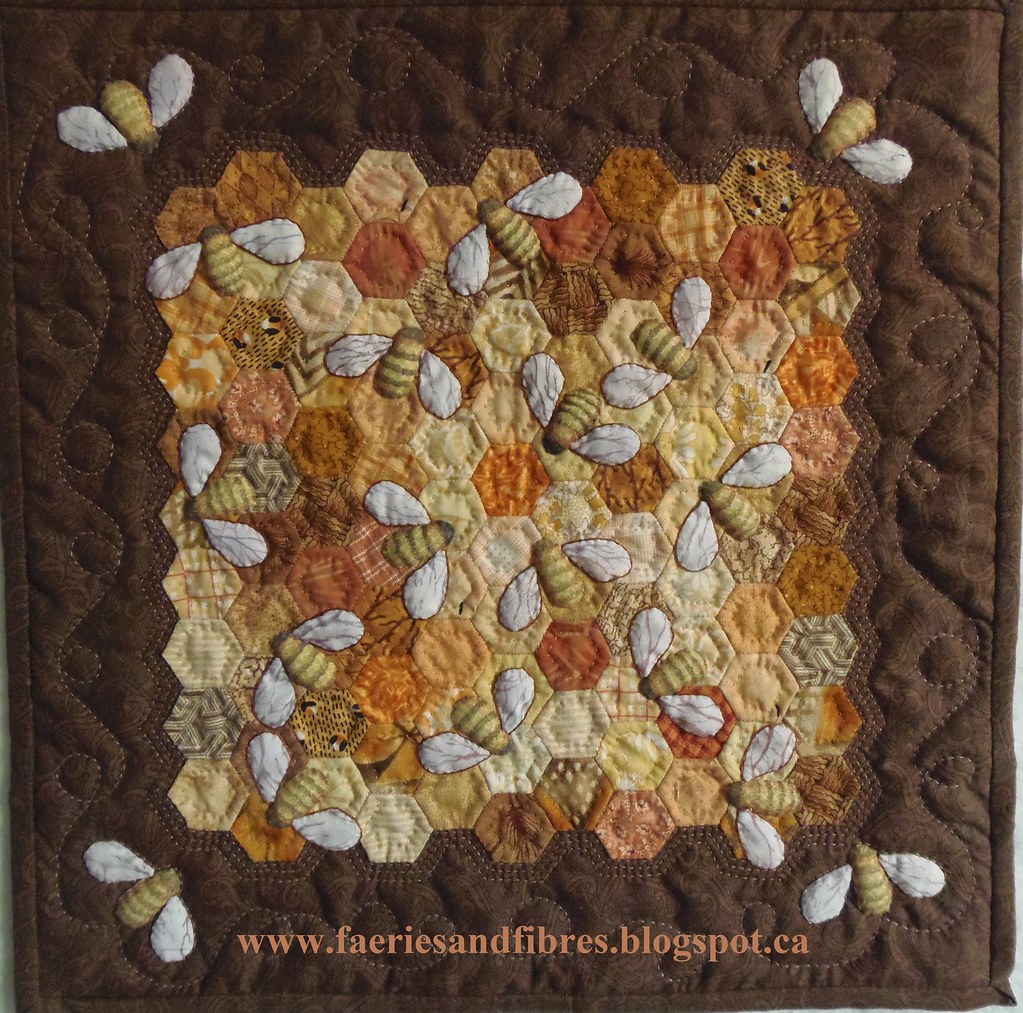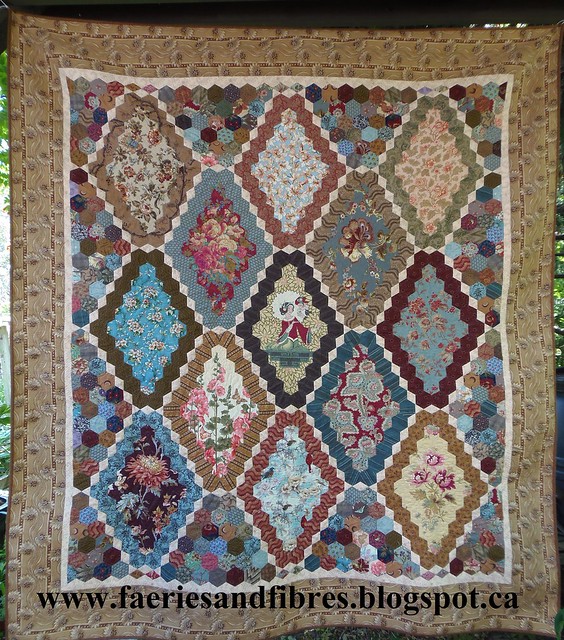Soma of
Whims and Fancies is having a virtual trunk show and it is called
Trunk Full of Quilts. Many of the blogs I follow are participating so I thought what the heck........why not join in the fun!
Trunk Full of Quilts is open to everyone. All you have to do is write a blog post, publish pictures of finished quilts, bags, pillows, wall hangings et cetera so that readers can drool over what you've made. There will be draws for prizes (no judging or voting is involved). But honestly, I think the best part of this event is sharing what we do with others. It is a great way to learn and get inspired.
I have been quilting for more than 35 years. I am know primarily for my English paper piecing but I love all sorts of quilt making. I've designed several patterns and they are available on
Craftsy. I've also designed and published two
free
quilt alongs and plan to launch my third in early 2016. So with all that being said here is my little trunk show!
This wall hanging is called
Flora and Fauna, Parts of the Garden. It is full of all sorts of plants and critters. You can see close-ups of the piece
here.
Here are a couple of close-ups. The first one has a grasshopper, a bee and a small worm.
I love these mushrooms. The grasshopper is a personal favourite and who doesn't like little red lady bugs?
Can you see the praying mantis hiding on the branch? He is after that orange Japanese beetle!
What most people don't notice until I point it out is that the brown fabric has ant tunnels quilted and then there are little red ants embroidered.
This is one of my hexagon quilts and I call it
Stars in the Loft. It was inspired by an antique quilt in the Met Museum although at the time I made it I had no information about the original quilt at all. All I had was a small black and white picture. I developed my own techniques to make new and interesting designs with hexagons. This quilt is hand pieced and hand quilted.
This quilt is called
81 The Giant Monstrosity. It was also inspired by an antique quilt. I knew it would be big when I was making it but had not idea just how big it would be. I wrote up a
pattern for this quilt if you are interested.
As of later I am known for my English paper piecing but I also like other designs. The humble nine patch is such a simple beginner block but there are so many design opportunities, especially if the blocks are small. I call this quilt Cherry Blossom because of the colours. This quilt was pieced and quilted on my domestic sewing machine.
Another of my nine patch quilts was inspired by an antique quilt. This one is called
Baskets and Nine Patches. I use my scraps as leaders and enders and I make nine patches. There is always a big box of patches ready and waiting to be turned into a quilt! This quilt was pieced and quilted on my domestic sewing machine.
Good Golly Miss Mollie is based on a quilt made by the women at the Denham College WI. It is hand pieced and entirely machine quilted on my domestic sewing machine.
This is a traditional block recently popularized by Jen Kingwell. Her version is pieced but I just wasn't interested in that tricky piecing so mine is appliqued. All of the pieces were prepared quickly with glue and then they were all glue basted to the background. I call my quilt
Lazy Punk. What you can't see in the picture is that the side setting triangles are made with a lovely toile print. The thing that makes it unique is that the figures are skeletons! This quilt was hand appliqued, then the blocks were stitched together by machine and I quilted it on my domestic sewing machine.
This is one of my earliest quilts. I was a beginner with no access to other quilters, books or lessons. I wanted to make this quilt and figured the easiest way would be to English paper piece it. I had bought a pound of fabric scraps by mail order and used many of them to make this quilt so I call it
A Pound of Stars. The quilt is made entirely by hand.
The quilt is called
Mom's Flower Bed. All of the stars, except for the dark green stars, are made with a single fabric. It is pieced by hand and is both hand quilted and machine quilted (the feathers in the border).
I reminds me of my Mom's garden. She is an avid gardener and loves her bees so I added some to the centre of my quilt. You can see then in the blue/green batik hexagons.
The last quilt is called
Loopers in the Sky with Diamonds. This quilt is English paper pieced and hand quilted.
The second last piece is a wall hanging called
A Challenging Year. The focus is a year in the life of a cherry tree. This was a challenge that I participated in. There were three or four challenge fabrics and I was able to add another five. I extended the colours by bleaching some of the fabrics and by added embroidered details.
The last piece is
Quilting Bees. I made this one for my Mom because of her love of bees. This little quilt measures 12 1/2" square. She hangs it in her sewing room.
I hope you enjoyed my trunk show. If you have a blog why not head on over to Soma's and link up your own trunk show? It is a great way to meet new people and get inspired!
Until I post again, happy sewing!
Karen H


















































